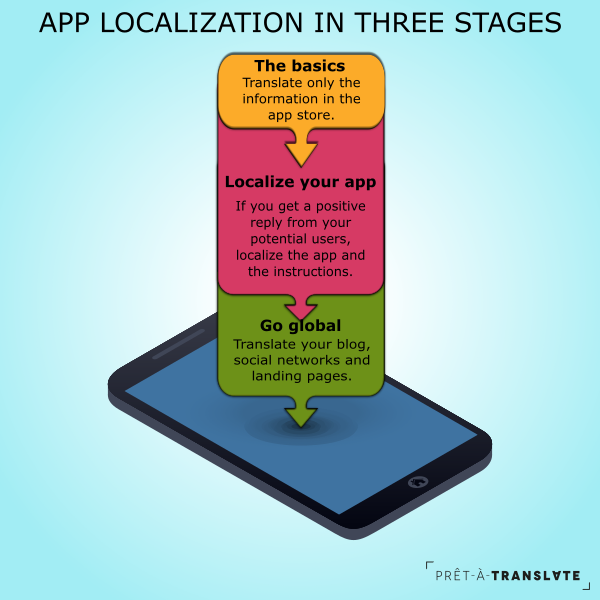
Mobile app localization
Reach and engage your target audience in 3 stages
As of today, Europe’s biggest mobile technology event is being held in Barcelona: the Mobile World Congress. Until 1 March, mobile phone operators, app developers, device manufacturers and thousands of gadget enthusiasts will come together to find out the latest sector news and tell us all the trends to look out for.
I have had the chance to go to this event three times. Although passes are excessively over-priced (in my humble opinion), there are ways that you can go at a more affordable price. If you want to know how, feel free to ask me 😉. The event lasts four really exhausting days. Not just because of the sheer size of exhibition centre, it is non-stop action: it is like a city inside another city.
At MWC, I have had meetings with mobile app developers from different countries, from Germany to Canada, passing through Croatia and Turkey. Even though the companies and the apps they develop are very different, most of them have some factors in common:
- They don’t know what software localization is. They often do their translations themselves because a) someone on the team knows how to speak a bit of the language, b) they use automatic translation software, like Google Translate, or c) they ask their partners in their target countries to do it, who usually have business acumen but don’t tend to have a technical background, let alone linguistic training.
- They work with inefficient tools, like Excel. They don’t tend to control the versions they produce and don’t think about consistency, i.e. how they translated different terms and sayings in different parts of their documentation.
- Their localization strategy is reactive, not proactive. They don’t think about target countries until someone asks for an app in their language.
In this blog post I am going to focus on the strategy side: how to identify your target audience and engage them using localization.

Stage 1: start with the basics
If you are not sure which countries could be more interested in your app, start by translating the descriptions in you app store. What language? Start with English. Whether we like it or not, it is the universal language, BUT it is only as a start. Once the translation is live, analyse the traffic stats and you’ll see which countries have piqued interest in your app. Translate the descriptions into the languages that are spoken in these countries, and see if interest increases.
If you are sure you know your target countries, you can skip translating this information in a common language. But this is a must: don’t forget to keep an eye on your traffic stats. You may find you have interest from countries you hadn’t even thought about. This can happen with similar languages, like Spanish and Portuguese. If your app information is in Spanish and you see that you are getting a high number of views from Portugal, these visitors may have used Spanish as a bridge language. If this happens, and Portugal wasn’t on your list of potential markets, you should add it and start translating your app store info into Portuguese. But Portuguese from Portugal, not Brazil.
Stage 2: translate the app and documentation
When you know what countries are interested in your app, you can start localizing it into your target languages. Remember that you also need to translate any other information related to the app, such as general conditions and instructions. And don’t forget to test the app before you publish it: this is the only way you can see if it is really suited to your target audience.
Stage 3: create a comprehensive localization strategy
Sometimes mobile apps are limited versions of more comprehensive desktop apps that are used to attract customers. The updates, premium versions or related products come after to gain customer loyalty.
Translating the basics is not enough. As well as translating the updates and full versions of the app, this stage also includes the rest of your international strategy, such as the website, social media, your blog, video tutorials, specific promotions, customer reviews and any other media or documents that go with your app. If you offer all of this information to your customers in their language, it’s more likely they will stay with you for longer. Of course, it’s not the only thing you need to think about. Even if the app is in their language, if your product doesn’t cover users’ needs, there isn’t much you can do about it, so don’t go pointing the finger at the translators if that’s your case 😇!
If you want your mobile app to reach more people, publishing it in the app store and waiting for someone to click on it is not enough. Help them find it by speaking their language.
